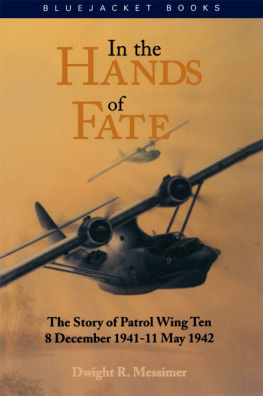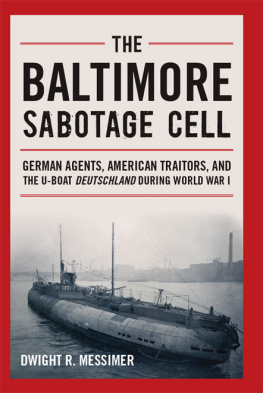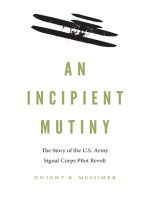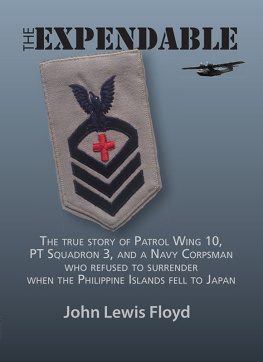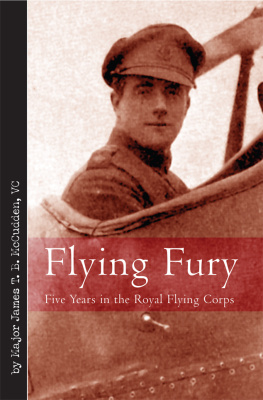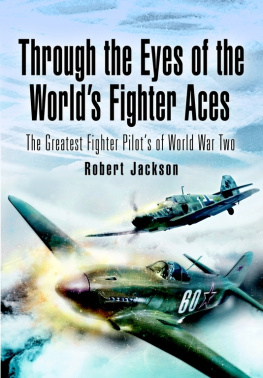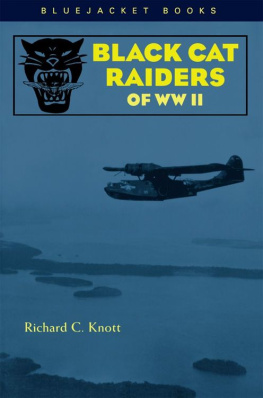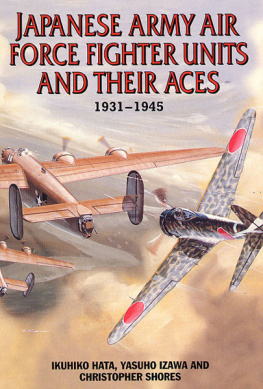In the Hands of Fate
The Story of Patrol Wing Ten
8 DECEMBER 194111 MAY 1942
By Dwight R. Messimer

BLUEJACKET BOOKS
Naval Institute Press
Annapolis, Maryland
This book has been brought to publication by the generous assistance of Marguerite and Gerry Lenfest.
Naval Institute Press
291 Wood Road
Annapolis, MD 21402
1985 by the United States Naval Institute
All rights reserved. No part of this book may be reproduced or utilized in any form or by any means, electronic or mechanical, including photocopying and recording, or by any information storage and retrieval system, without permission in writing from the publisher.
First Bluejacket Books printing, 2002
Library of Congress Cataloging-in-Publication Data
Messimer, Dwight R., 1937-
In the hands of fate: the story of Patrol Wing Ten,
8 December 1941-11 May 1942 / by Dwight R. Messimer.
p. cm. (Bluejacket books)
Originally published: Annapolis, Md.: Naval Institute Press, 1985.
Includes bibliographical references and index.
ISBN 978-1-61251-175-7 (alk. paper)
1. World War, 1939-1945Naval operations, American. 2. World War, 1939-1945Aerial operations, American. 3. United States. Navy. Patrol Wing 10History. 4. World War, 1939-1945CampaignsPacific Ocean. I. Title. II. Series.
D773 .M43 2002
940.544973dc21
2002070339
In the Hands of Fate
To my parents
Contents
Dwight Messimers In the Hands of Fate, which recounts the story of Patrol Wing Ten during the early months of World War II, is a remarkable book and should become a principal source for researchers who want to know more about the navys air operations in the Philippines, the Netherlands East Indies, and Australia at the time U.S. forces were being overwhelmed by the Japanese.
The wing operated from Olongapo and Sangley Point (in Manila Bay) for perhaps a week and then commenced a long retreat through the Indies and eventually to Perth, Australia. There was a pause in the Indies when operations were conducted from Surabaja, the major Dutch naval base, from Ambon, a secondary base, and from a number of other places where seaplane tenders supported the flights. One squadron of reinforcements from Pearl Harbor joined the wing in early 1944.
Because the PatWing-10 aircraft and crews were so scattered, the individual crews knew nothing about the adventures of others. Never after the early departure from the Manila area was the wing assembled at a central point where everyone could be privy to all that went on. When some of us finally arrived in Perth, many of the earlier arrivals had already left for the United States to take up other assignments, and I, for one, never saw many of my close Olongapo squadron mates until months and even years later.
Messimer has succeeded in identifying and getting pertinent information from virtually every survivor of Patrol Wing Ten. From their testimony and from the formal navy reports, he has pieced together the whole story, and I will wager that prior to his fine work nobody knew it all and very few knew very much about it.
There is an impressive amount of detail about the air operations. At the same time, he shows an understanding of the overall picture in the Far East during those eventful months just before and after the start of hostilities. Patrol Wing Ten had existed for almost exactly one year. My squadron (VP-26) was ordered from Pearl Harbor to the Philippines in December 1940 to become the second of two squadrons, VP-101 at Sangley Point, and VP-102 at Olongapo. Our dependents were not permitted to go with us, and the navy dependents then in the Philippines were being ordered to return to the United States. The army and army air corps were not so conservative, and the fact that their families were still there was an irritant to most of us during that year before the war. For a few months prior to December 1941, there were repeated alertseveryone ordered to remain at baseand weekend jaunts to Manila and Baguio had to be postponed. These repeated cries of wolf resulted in many of us becoming cynical about the likelihood of war. How would a small nation like Japan ever dare to attack the United States? Why was General MacArthur living in that penthouse in the Manila Hotel if war was imminent? These and other questions were answered when we were awakened at midnight to be told that Pearl Harbor had been attacked.
One of the things that impressed me in retrospect after it was all over was the fact that in the Asiatic Fleet there was hardly a single person, officer or man, who had ever experienced a shooting war. None of us really knew what was expected of us. I can recall a message we were shown on the first day from old Admiral Tommy Hart, the fleet commander, saying, We are at war. Conduct yourselves accordingly. Each of us looked at the squadron mates on each side of him wondering privately just what that meant. We had no yardstick and no combat experience. We really did not know for sure what could or should be done by a PBY crew. All things considered, the way the wing did perform was highly creditable.
The book is full of exciting stories about individual exploits. As I said earlier, I had never known about many of them because of the very wide dispersal of our forces. Im proud to say that I was a member of Patrol Wing Ten. I think that we did all that we could, and several turned out to be heroes. I think we did conduct ourselves accordingly as we were admonished to do by Admiral Harts message, and that our performance stood up well when examined later on.
This is not to say there werent failures in leadership and individual performances. The author has soft-pedalled these in his story, and I believe it is best that way. Messimer told me that he had no desire to be a head hunter. After any very complex operation in war, it is always easy to find disgruntled people who want to expose the truth and tell the real story. These stories come almost always from the poor performers. We did wonder about some of our orders and were puzzled about the performance of a few leaders. Now that I am older, I realize much more fully that troops really never fully understand the reasons why. It wasnt until about May of 1944 in Perth that I learned the full story of our losses at Pearl Harbor. During our action in Southeast Asia, we actually did continue to hope for and even to expect reinforcements, but none came except for the single PBY squadron from Hawaii. So when it became clear that we were going to have to make do with what we had, I suppose its fair to say that our morale wasnt always the highest. A patrolling crew couldnt help but wonder why it mattered if they did sight advancing Japanese forces, for they knew that almost nothing could be done about it. However, the flights went on as regularly as possible with the diminishing numbers of planes, and individual heroics were not uncommon.
One of the good things that has transpired is that there is a bond among most of the survivors. I have a feeling that I was among a really fine group. The chiefs, especially, were absolutely outstanding.
A gratifying number of the officers went on to become flag officers. One of our most outstanding performers, who had perhaps the most harrowing experience of any of us, was Admiral Thomas H. Moorer. He eventually became chief of naval operations and later chairman of the joint chiefs of staff.
Later on in the war, patrol plane operators surpassed whatever we managed to do, but for the most part, they had better aircraft and were part of the great steamroller of military power we had built and trained after those early setbacks. The knowledge that something has been done only leads to someone deciding that he can do it better, and usually he does. However, that is getting beyond the purpose of this foreword.

